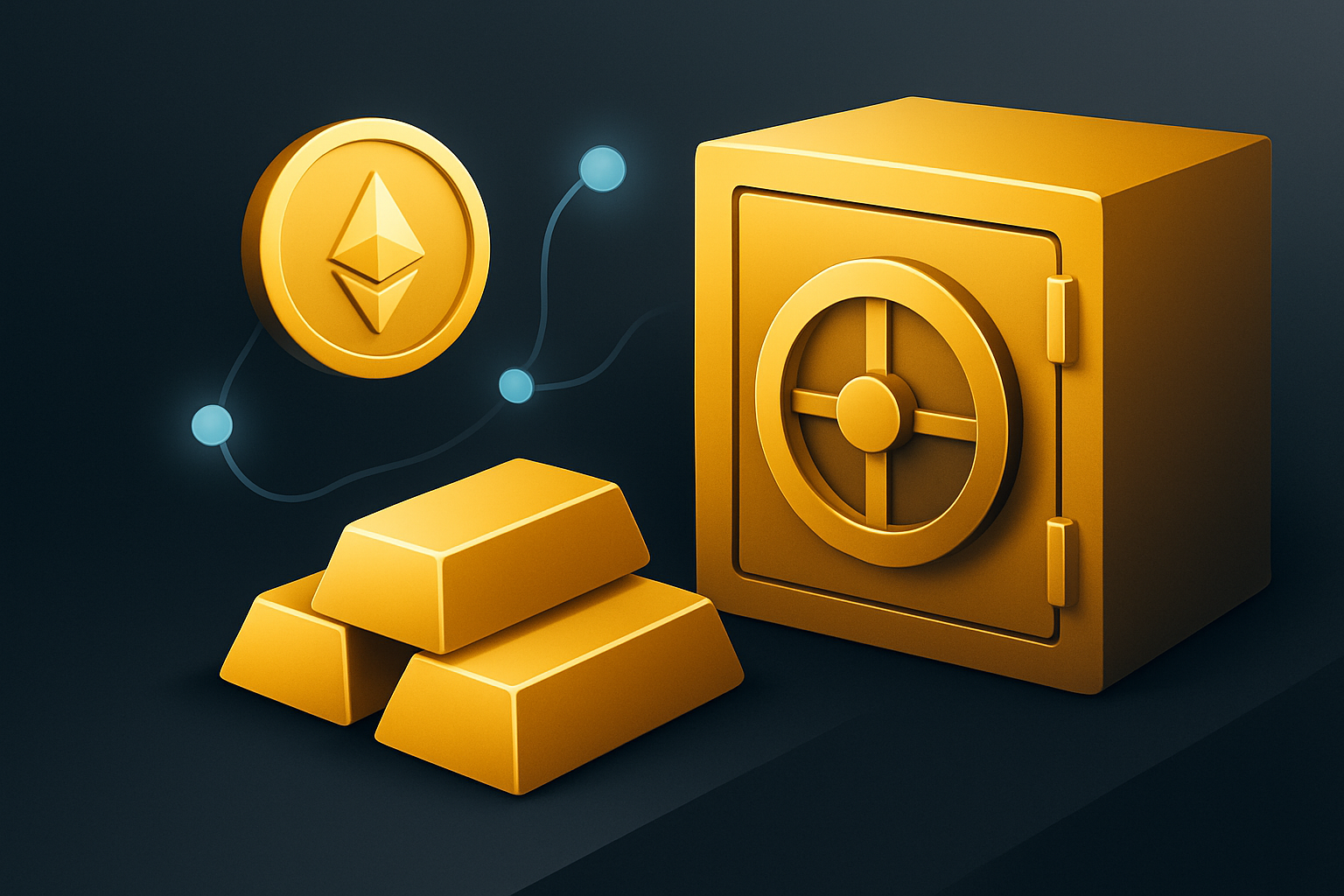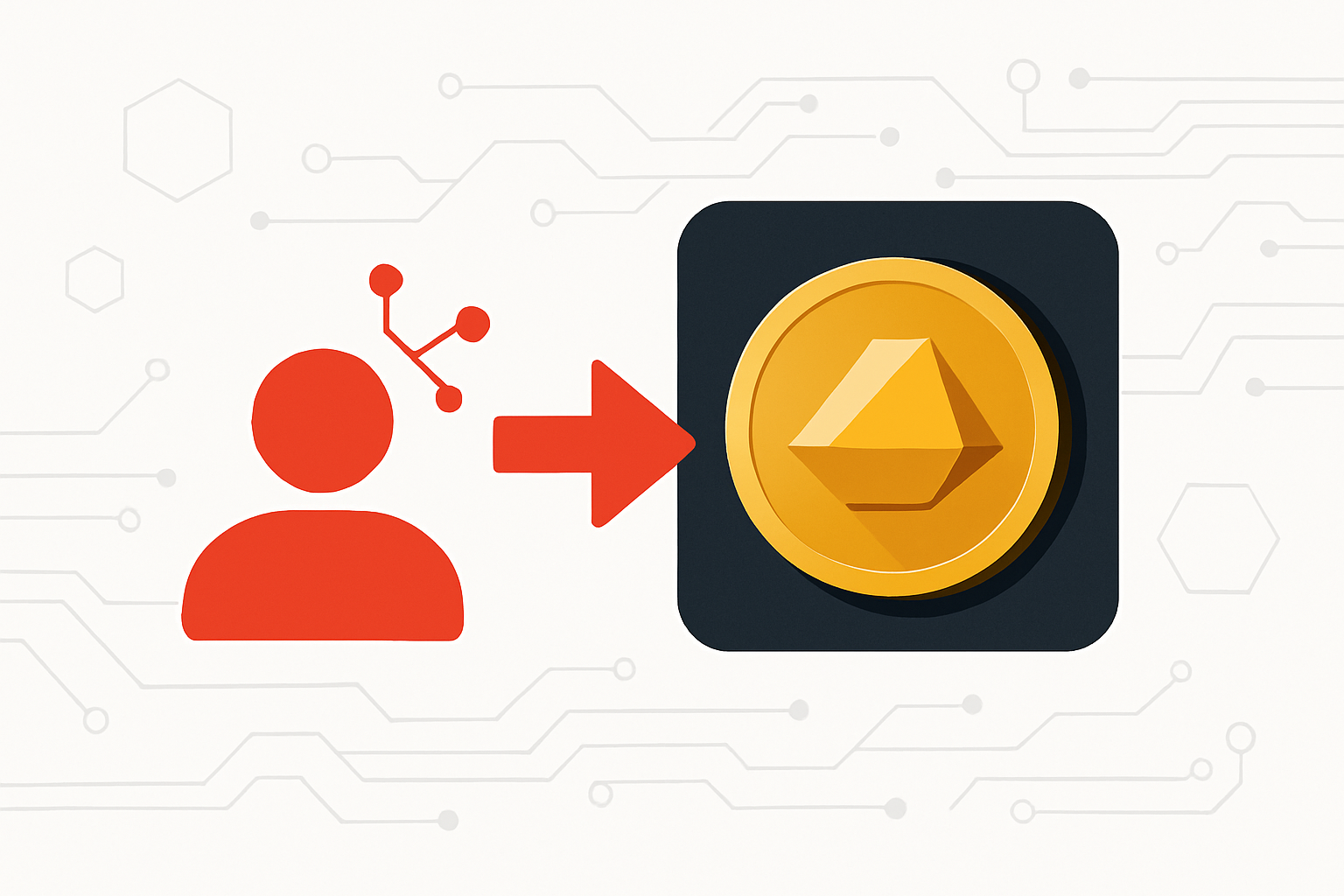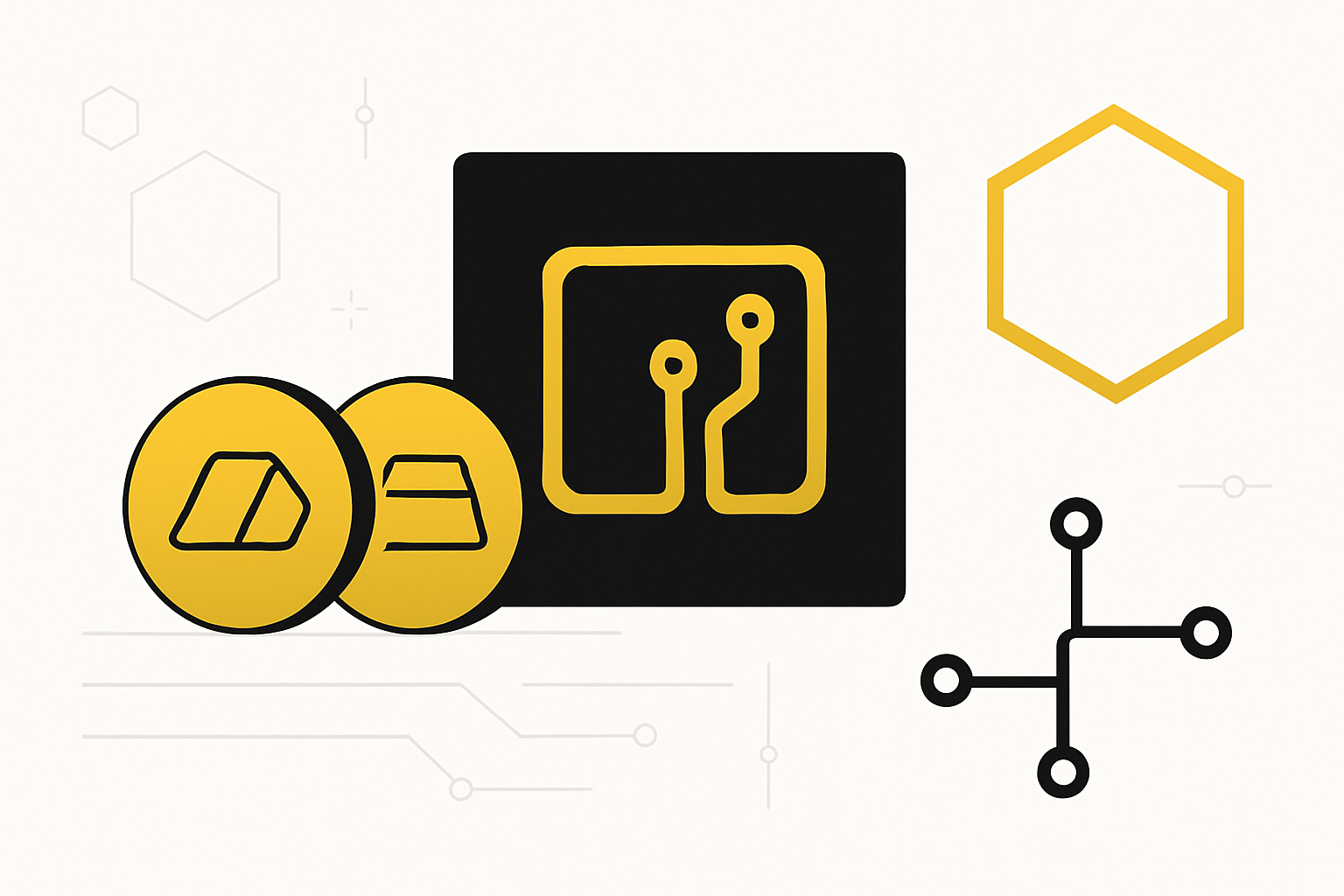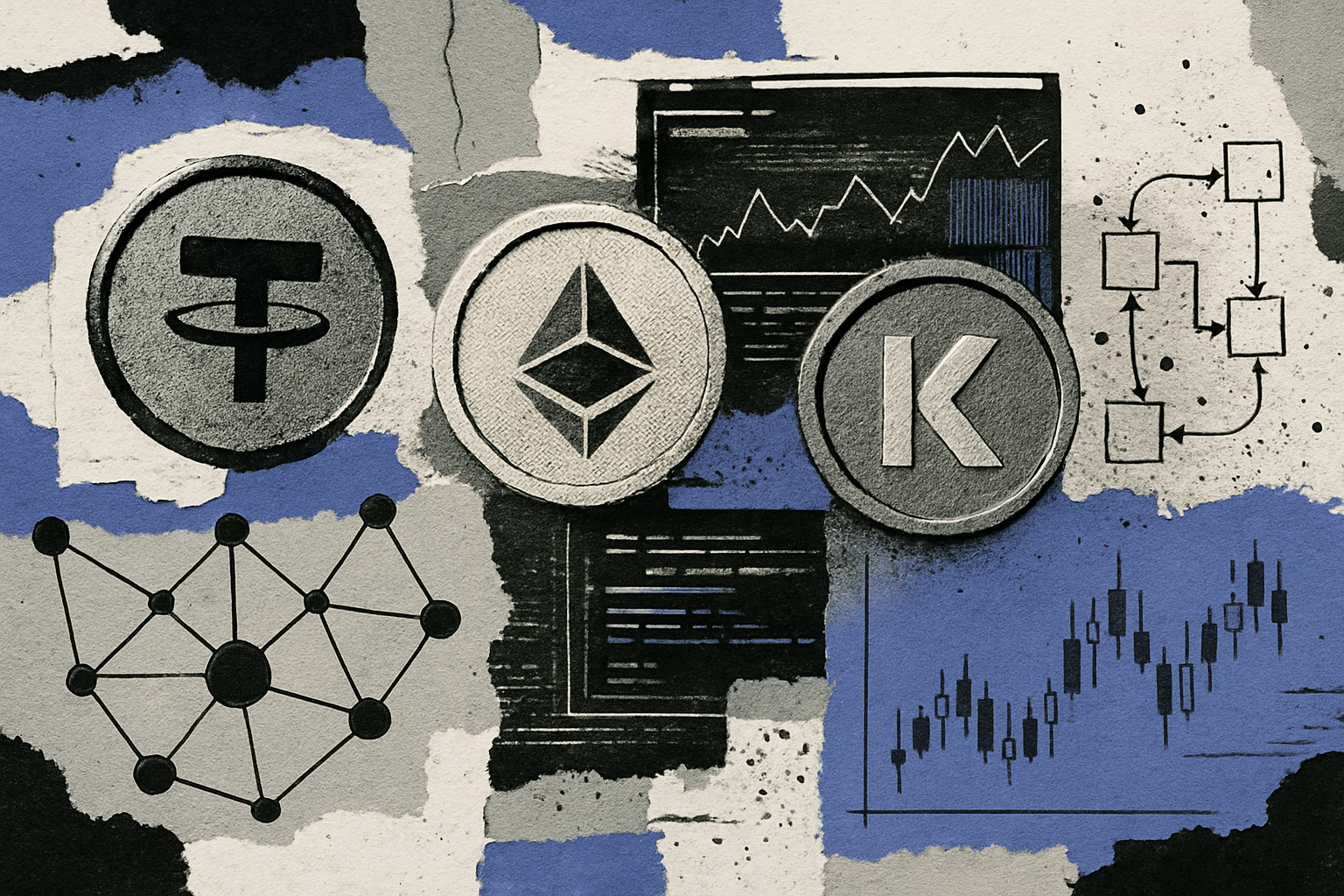How Tokenized Gold is Transforming DeFi: From On-Chain Vaults to Yield Strategies

Tokenized gold is rapidly reshaping the landscape of decentralized finance (DeFi), transforming a centuries-old safe haven into a liquid, programmable, and income-generating asset. By representing physical gold with digital tokens on the blockchain, investors can now leverage gold’s stability while unlocking new yield opportunities that were previously unimaginable with traditional bullion or ETFs.
On-Chain Gold Vaults: Turning Physical Bullion into Dynamic Digital Assets
At the heart of this transformation lies the concept of on-chain gold vaults. Each tokenized gold asset, such as PAX Gold (PAXG), currently trading at $3,783.04: is backed by real, audited bullion stored in secure vaults. Every token typically represents a precise amount of physical gold, and regular third-party audits provide transparency and peace of mind to investors. The result: a digital asset that is as trustworthy as it is flexible.
This process not only eliminates intermediaries but also brings real-time, borderless liquidity to an otherwise static commodity. Investors can buy fractions of a gold bar with ease, move assets globally in seconds, and integrate their holdings directly into DeFi protocols, all without leaving the blockchain ecosystem. For more on how tokenized gold vaults work and why they matter, see this deep dive from HTX Official (read here).
Yield Strategies: From Staking to Composable DeFi Opportunities
The real game-changer comes from what you can do with tokenized gold in DeFi. No longer limited to passive holding, investors are deploying their tokens across a spectrum of yield-generating strategies:
- Liquidity Provision in Automated Market Makers (AMMs): Platforms like Uniswap allow users to supply PAXG to pools such as PAXG/USDC. In return for providing liquidity for swaps between tokenized gold and stablecoins, investors earn a share of trading fees, generating passive income while maintaining exposure to gold’s value.
- Staking and Single-Sided Yield: Some protocols offer staking options that let users lock up their tokenized gold to earn rewards. Recent trends highlight the appeal of single-sided staking models that focus on arbitrage strategies rather than unsustainable double-token incentives (see Cointelegraph analysis). This approach preserves your core investment thesis while still generating yield.
- Leveraged Yield and Composability: Advanced users are experimenting with looping strategies, using tokenized gold as collateral to borrow stablecoins, buy more PAXG, and repeat the process. While this amplifies both potential returns and risks, it showcases DeFi’s unique flexibility compared to traditional finance.
- Yield Tokenization and Risk Management: Emerging protocols now let investors split yield-bearing assets into principal and yield components. This allows for hedging against future rate changes or selling future yield streams, a sophisticated tool for managing volatility in decentralized lending pools (learn more here).
PAX Gold ($3,783.04): Real-Time Market Context and Investor Sentiment
The value proposition of tokenized gold has never been clearer than it is today. As of September 27,2025, PAX Gold (PAXG) sits at $3,783.04, reflecting its close linkage with spot bullion prices yet offering far greater utility within digital markets. Meanwhile, SPDR Gold Shares ETF (GLD) trades at $346.74, a reminder that traditional vehicles still play a role but lack the programmability or on-chain composability now possible through blockchain-based assets.
PAX Gold (PAXG) Price Prediction 2026-2031
Forecasts based on current DeFi trends, gold market dynamics, and the evolving role of tokenized gold in crypto finance.
| Year | Minimum Price | Average Price | Maximum Price | Potential % Change (Avg YoY) | Market Scenario Insights |
|---|---|---|---|---|---|
| 2026 | $3,700 | $3,900 | $4,200 | +3% | Stable gold prices with moderate DeFi adoption; yield strategies mature but remain conservative |
| 2027 | $3,650 | $4,050 | $4,400 | +3.8% | Yield products regain popularity as DeFi protocols improve risk management; regulatory clarity boosts confidence |
| 2028 | $3,750 | $4,250 | $4,600 | +5% | Tokenized gold integration with more platforms; gold as a safe-haven asset in volatile crypto cycles |
| 2029 | $3,900 | $4,450 | $4,850 | +4.7% | Institutional adoption increases; innovative DeFi strategies drive higher yields and liquidity |
| 2030 | $4,050 | $4,650 | $5,100 | +4.5% | Tokenized gold widely accepted in DeFi and traditional finance; competition intensifies but PAXG retains trust |
| 2031 | $4,200 | $4,900 | $5,400 | +5.4% | Global macro uncertainty boosts gold demand; on-chain gold becomes a standard for diversified DeFi portfolios |
Price Prediction Summary
PAX Gold (PAXG) is expected to show steady, moderate growth from 2026-2031, closely tracking the underlying gold price with additional yield opportunities through DeFi. While price volatility is lower than most cryptocurrencies, the integration of PAXG into DeFi platforms and innovative yield strategies offer incremental upside. Minimum and maximum price ranges reflect both bullish adoption scenarios and potential market corrections. Average annual growth is projected between 3-5%, with more significant gains possible in years of heightened gold demand or DeFi innovation.
Key Factors Affecting PAX Gold Price
- Gold price trends and macroeconomic conditions (inflation, geopolitical risks)
- DeFi adoption rates for tokenized gold and yield products
- Regulatory developments around security, stablecoins, and tokenized assets
- Advancements in DeFi protocols for risk management and yield optimization
- Competition from other tokenized gold and real-world asset platforms
- Institutional participation in on-chain gold markets
- Liquidity and transparency of underlying gold reserves
Disclaimer: Cryptocurrency price predictions are speculative and based on current market analysis.
Actual prices may vary significantly due to market volatility, regulatory changes, and other factors.
Always do your own research before making investment decisions.
This integration between physical assets and DeFi protocols is creating new liquidity channels and opening doors for both individual investors seeking passive income and institutions aiming for diversified exposure without sacrificing security or transparency.
Yet, as with any innovation in decentralized finance, the promise of yield on tokenized gold comes with its own set of challenges and nuances. Investors must weigh the allure of passive income against the risks inherent to smart contracts, platform solvency, and evolving regulatory frameworks. While some DeFi gold products have fallen short due to unsustainable incentives or opaque mechanisms, the trend is shifting toward simpler, more transparent models such as single-sided staking and arbitrage-based strategies. These approaches are proving more resilient and attractive for both retail and institutional participants.

Navigating Risks: Best Practices for Staking Gold-Backed Tokens
The key to successful participation lies in balancing potential returns with robust risk management. Here are actionable strategies for investors looking to optimize their DeFi gold exposure:
Best Practices for Staking Tokenized Gold in DeFi
-

Understand Single-Sided vs. Liquidity Pool Staking: For lower risk, consider single-sided staking of PAXG on platforms like StakingRewards, which avoids impermanent loss. For potentially higher yields, provide PAXG to liquidity pools (e.g., PAXG/USDC on Uniswap), but be aware of market volatility and associated risks.
-

Monitor Real-Time Yields and Analytics: Use platforms like StakingRewards or DeFiLlama to track real-time returns, compare yield strategies, and analyze risk metrics for tokenized gold staking.
-

Prioritize Risk Management: Diversify across multiple protocols and avoid over-leveraging. Always verify smart contract audits and insurance coverage (e.g., Nexus Mutual) to mitigate risks associated with DeFi exploits or platform failures.
-

Stay Informed on Tokenized Gold Prices: Regularly check the current price of your staked asset. For example, as of September 27, 2025, PAX Gold (PAXG) is priced at $3,783.04. Accurate price tracking helps you make timely decisions and optimize yield strategies.
- Diversify across platforms: Spread your PAXG or similar tokens over multiple reputable protocols to reduce counterparty risk.
- Monitor real-time yields and fees: Use comprehensive analytics dashboards that track performance, APYs, and underlying vault health.
- Prioritize transparency: Choose platforms with frequent audits, clear collateralization ratios, and open-source smart contracts.
- Avoid excessive leverage: While looping can boost returns, it also amplifies downside risk if market conditions shift suddenly.
- Stay informed on regulatory changes: As global authorities refine their stance on digital commodities, compliance will be crucial for long-term viability.
The Road Ahead: Tokenized Commodities Beyond Gold
The success of PAX Gold at $3,783.04, alongside growing on-chain liquidity pools and innovative yield strategies, signals a broader shift within DeFi. Tokenization is rapidly expanding beyond gold into other commodities – from oil barrels to industrial metals – each bringing unique characteristics and opportunities for programmable finance. As infrastructure matures and user education improves, expect even more sophisticated products that blend traditional asset stability with blockchain’s dynamism.
This evolution is not just about yield; it’s about creating a new paradigm where assets once considered illiquid or cumbersome can now move at the speed of code. For those willing to engage thoughtfully – balancing ambition with caution – tokenized gold offers a compelling bridge between centuries-old value and tomorrow’s financial possibilities.






